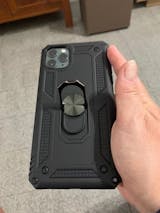MagSafe vs Wireless Chargers? All you Need to Know
When Apple included MagSafe technology in some of its iPhones, it caused some misunderstanding about the distinctions between MagSafe and traditional wireless chargers. In this article, we'll explain what MagSafe is, how it differs from wireless charging, and why you want to buy a phone with Its features.
What you need to know about MagSafe vs wireless charging is as follows:
What Exactly Is MagSafe?
MagSafe is an Apple-exclusive magnet attachment technology. It was first launched on MacBook Pro PCs in 2006. The MagSafe connection ensured that if someone tripped over the power cable, it would securely separate from the computer rather than sending the laptop plummeting to the ground, destroying both the machine and the cord.
MagSafe technology found its way to phones in the 2020 iPhone 12 and 12 Pro release. MagSafe chargers were predated by Qi wireless charging, which is still widely used today. Technically, MagSafe phones continue to utilize Qi-based wireless charging coils – the chargers are encircled by a ring of unique magnets that ensures the phone firmly adheres to the wireless charger for more significant contact and a quicker charge.

Shop For iPhone 13 Pro Cases in Canada
Wireless Charging VS MagSafe
In a nutshell, MagSafe is a kind of wireless charging that is accessible on some new iPhone models. To add to the confusion, MagSafe isn't even accessible on all iPhones. While many anticipated the newly launched iPhone SE 2022 to have MagSafe support, it instead has regular old-fashioned Qi wireless charging. If you want MagSafe, you must purchase an iPhone 12 or later (either the base model, the Pro, the Pro Max or the Mini).
You should be aware that many phones from Apple and other manufacturers like Samsung support wireless charging. Furthermore, iPhones with MagSafe capabilities will continue to function with non-MagSafe wireless charging peripherals. They won't charge as quickly.
Magsafe Benefits
Before MagSafe, Qi wireless chargers had a maximum charging power of 7.5W, meaning it took longer to charge the phone wirelessly. In many situations, the smartphone had to be oriented entirely to get the 7.5W charging power, and you frequently had to fiddle with it to get it just positioned. There was no attachment to hold the phone in place, so it may vibrate out of position and even cease charging without your notice.
With MagSafe charging, your phone not only remains firmly on the charging pad but can also get up to 15W of power, dramatically reducing charging time. According to one Apple Insider test, the MagSafe wireless charger charges 30 minutes quicker than a standard Qi wireless charger. However, if you're in a rush, connecting your iPhone to a USB-C Lightning connector is still the quickest to charge.
The secure magnetic connection may also be used for tripods, automobile mounts, phone grips, bike mounts, phone wallets, battery packs, and other accessories. Suppose you've ever wanted to connect accessories to the back of your iPhone but wanted to avoid committing to permanent glue. In that case, MagSafe is a fantastic compromise, and you should certainly consider upgrading to a MagSafe iPhone.

Buy Your Magsafe Charger Now
MagSafe is another step forward in wireless charging for late-generation iPhones. Choosing MagSafe-compatible accessories will allow you to maximize the possibilities of your iPhone and enable quicker wireless charging. It would help if you also got a MagSafe case to secure your iPhone while allowing it to connect to MagSafe-compatible peripherals. Your phone cover will often define which accessories you may and cannot use.
We have many MagSafe cases and compatible accessories for your iPhone at Case-Fit, including wireless chargers, charging stations, battery packs, and more. Take advantage and stock up on iPhone MagSafe accessories!
 Skip to content
Skip to content




